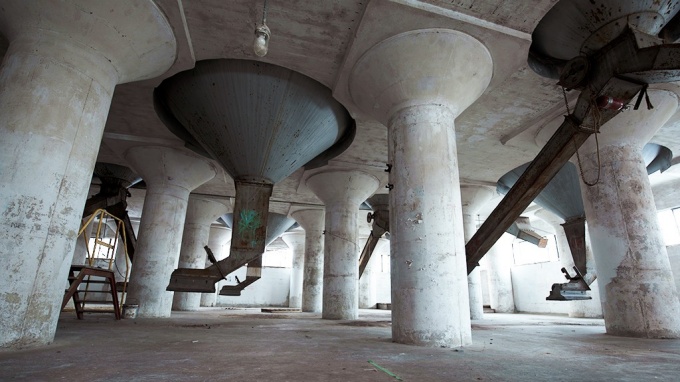Siloed Dreams

"Siloed Dreams": A still from the film, of a grain silo and elevator in Buffalo's "Silo City" district.
The 1825 opening of the Erie Canal established Buffalo as the central point of connection between the developed ports and population centers of the Northeast and the newly-seeded towns and fields of the Midwest. Industries flourished around the transshipment of grain and, in 1842, the first steam-powered grain elevator in the world was constructed on the bank of the Buffalo River. The city's concrete grain silos and daylight factories provided a direct source of inspiration for modernism in Europe, and photographs of Buffalo's grain elevators appeared in the seminal texts of Walter Gropius, Erich Mendelsohn, and Le Corbusier. While changes in transportation patterns in the mid-twentieth century led to the gradual abandonment of the silos, they live on as monuments of American ingenuity.



